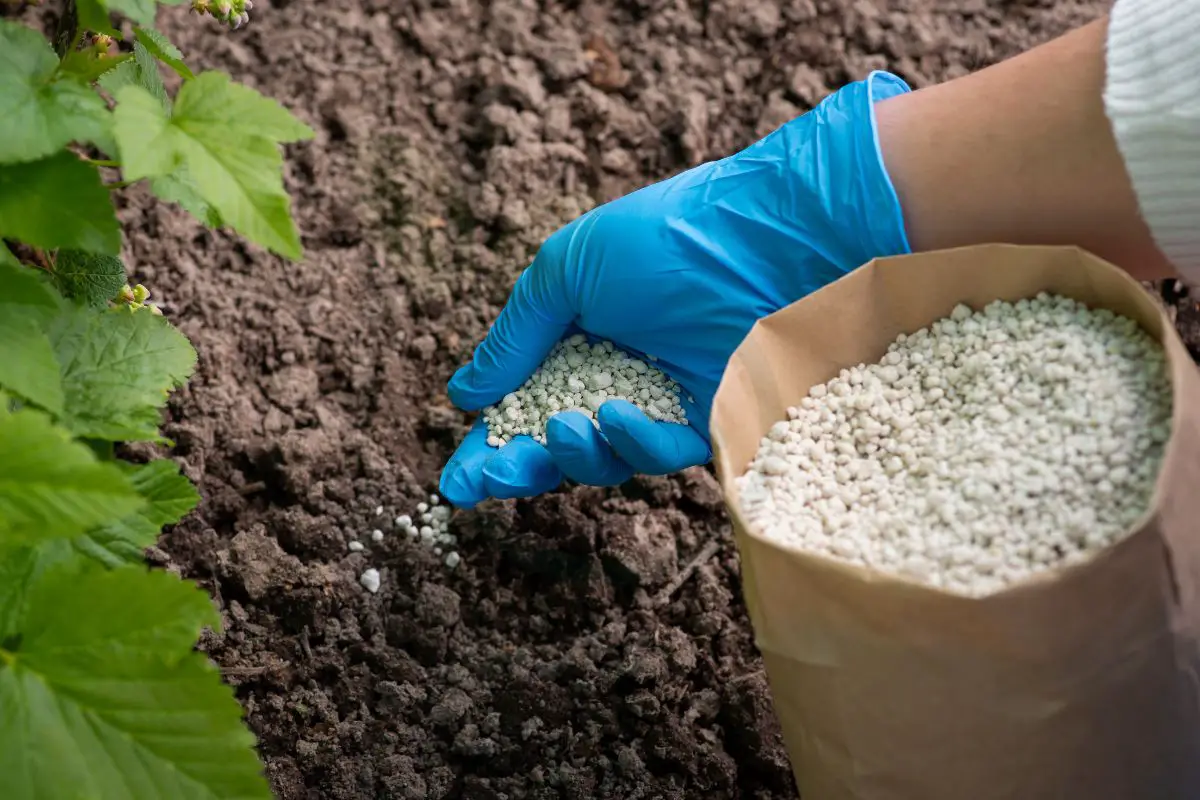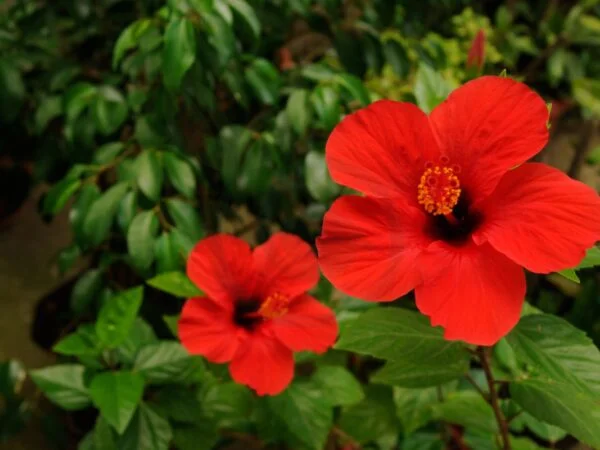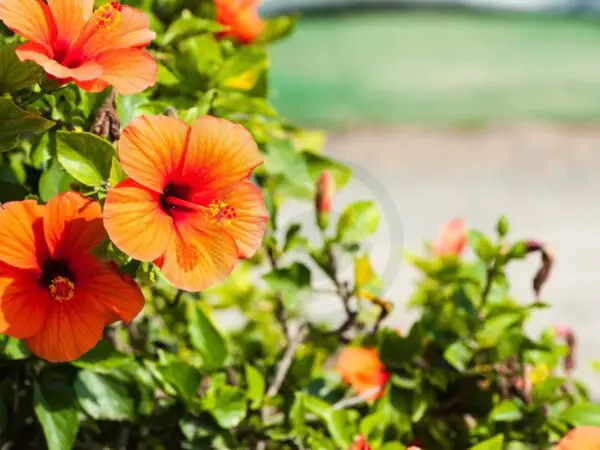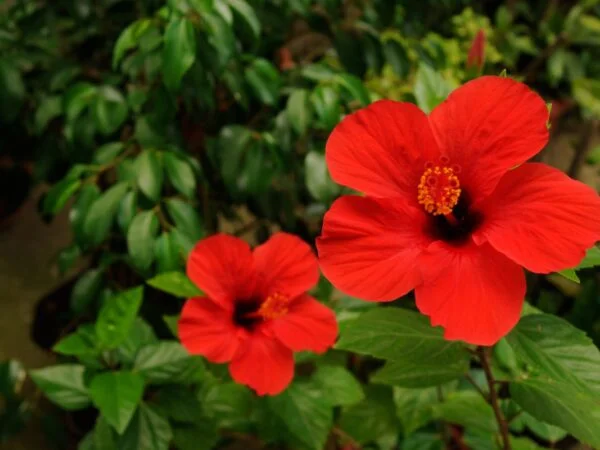When to fertilize hibiscus? Wondering about the best timing for optimal growth and vibrant blooms? In this guide, we'll delve into the essential tips and tricks to ensure your hibiscus plants thrive.
Key Takeaways
- Fertilize hibiscus during the growing season: Apply fertilizer in spring and summer to promote healthy growth and vibrant blooms.
- Choose a balanced fertilizer: Opt for a fertilizer with equal parts of nitrogen, phosphorus, and potassium to meet the specific needs of hibiscus plants.
- Apply fertilizer evenly: Spread the fertilizer around the root zone of the plant and water thoroughly to ensure proper absorption.
- Watch for signs of over-fertilization: Yellowing leaves, stunted growth, or leaf burn indicate excess nutrients; adjust the feeding regimen accordingly.
- Address nutrient deficiencies promptly: Monitor the plant for symptoms like yellowing leaves and adjust the fertilizer type or schedule as needed.
- Avoid common mistakes: Prevent issues like using too much fertilizer, neglecting seasonal care, or ignoring signs of nutrient problems to maintain healthy hibiscus plants.
Understanding Hibiscus
Types
Hibiscus plants come in various types, including Tropical Hibiscus, which thrives in warmer climates, and Hardy Hibiscus, known for its ability to withstand colder temperatures. Each type has specific requirements for care and maintenance.
When it comes to choosing the right hibiscus type for your garden, consider factors like climate, sunlight exposure, and space availability. Understanding the characteristics of each type will help you make an informed decision that suits your gardening needs.
Growth Habits
Hibiscus plants are known for their vibrant flowers and lush foliage. They typically grow as shrubs or small trees, depending on the variety. Regular pruning is essential to promote healthy growth and encourage blooming.
Proper watering and fertilization are crucial for the optimal growth of hibiscus plants. Regular fertilization during the growing season helps provide essential nutrients for robust growth and abundant flowering. Use a balanced fertilizer with equal parts nitrogen, phosphorus, and potassium for best results.
Seasonal Changes
Understanding the seasonal changes that hibiscus plants undergo is key to their overall health and longevity. During the growing season, which typically spans from spring to fall, hibiscus plants require regular watering and fertilization to support active growth.
As winter approaches, hibiscus plants enter a dormant phase where growth slows down significantly. It is important to adjust your care routine during this time by reducing watering frequency and avoiding heavy fertilization. Protecting the plant from frost is also crucial in colder climates.
Importance of Fertilization
Boosts Growth
Fertilizing hibiscus promotes vigorous growth by providing essential nutrients like nitrogen, phosphorus, and potassium. These nutrients are crucial for stimulating leafy green growth in the plant.
Fertilization helps hibiscus develop strong roots that anchor the plant firmly in the soil, aiding in nutrient absorption. It also encourages the growth of new shoots and branches, leading to a bushier and healthier plant.
Enhances Blooming
Proper fertilization results in abundant and vibrant blooms on hibiscus plants. The right balance of nutrients promotes flower bud formation and ensures a continuous display of colorful blossoms.
By supplying necessary nutrients, fertilization supports the development of large, showy flowers that attract pollinators like bees and butterflies. This enhances the overall beauty of your garden or landscape.
Supports Health
Regular fertilization is essential for maintaining the overall health and vitality of hibiscus plants. It strengthens the plant's immune system, making it more resistant to diseases and pests.
Fertilization also aids in replenishing depleted nutrients in the soil, ensuring that the hibiscus receives all the essential elements required for optimal growth. This leads to robust foliage and improved tolerance to environmental stressors.
Best Time to Fertilize
Spring Season
Spring is an ideal time to fertilize hibiscus, as it marks the beginning of the plant's active growth period. During this time, hibiscus plants benefit from a boost of nutrients to support their development and blooming. It is recommended to fertilize once in early spring and then again later in the season.
- Ensure the fertilizer is rich in nitrogen to promote healthy foliage growth.
- Phosphorus content aids in flower production, so look for a balanced fertilizer suitable for flowering plants.
Summer Tips
In summer, when temperatures rise, hibiscus plants are in full bloom and require regular feeding to sustain their vibrant flowers. The high energy expenditure during this period necessitates frequent fertilization to replenish essential nutrients. Consider using a slow-release fertilizer to provide continuous nourishment throughout the season.
- Opt for a water-soluble fertilizer that can be easily absorbed by the plant's roots.
- Apply fertilizer every two weeks during peak summer months for optimal results.
Avoiding Winter
As winter approaches, it is crucial to reduce or halt fertilization for hibiscus plants. With decreasing daylight hours and lower temperatures, the plant's growth slows down, making it less receptive to nutrients. Ceasing fertilization helps prevent new growth that may be susceptible to damage from frost or cold weather conditions.
- Refrain from feeding hibiscus plants in late fall as they prepare for dormancy.
- Resume fertilization only when signs of new growth appear in early spring.
Fertilizer Types
Chemical Options
Chemical fertilizers for hibiscus contain a blend of essential nutrients like nitrogen, phosphorus, and potassium. These fertilizers are beneficial for quick nutrient absorption by the plant. However, overuse of chemical fertilizers can lead to soil degradation and harm beneficial soil organisms.
- Quick absorption
- Contains essential nutrients
- Risk of soil degradation with overuse
Chemical options provide an immediate nutrient boost to hibiscus plants, aiding in fast growth and vibrant blooms. However, it is crucial to follow manufacturer instructions to prevent over-fertilization and potential damage to the plant.
Organic Choices
Organic fertilizers for hibiscus are derived from natural sources such as compost, manure, or bone meal. These options are environmentally friendly and promote long-term soil health. They release nutrients slowly, reducing the risk of nutrient leaching.
- Environmentally friendly
- Promotes long-term soil health
- Slow-release nutrients
Organic choices ensure steady nutrient supply to hibiscus plants without the risk of chemical buildup in the soil. While organic fertilizers may take longer to show results compared to chemical counterparts, they offer sustainable nourishment for your plants.
Slow-Release Formulas
Slow-release fertilizer formulations provide a gradual release of nutrients over an extended period. These formulas are convenient for reducing frequent fertilization needs and ensuring a consistent nutrient supply for hibiscus plants. They help prevent nutrient wastage and minimize the risk of over-fertilization.
- Gradual nutrient release
- Reduced frequency of application
- Minimizes risk of over-fertilization
Using slow-release formulas simplifies the fertilization process for hibiscus owners by requiring less frequent applications while maintaining optimal plant nutrition levels. This approach also minimizes the chances of nutrient imbalances that can harm plant growth.
Application Techniques
Soil Preparation
When fertilizing hibiscus, ensure the soil is moist to aid nutrient absorption. Loosen the soil to allow better penetration.
Dig a few inches into the soil around the plant, avoiding damaging roots. This step helps distribute nutrients evenly.
Frequency
Hibiscus plants benefit from regular fertilization during the growing season. Apply fertilizer every 4-6 weeks for optimal growth.
Avoid over-fertilizing as it can lead to nutrient imbalances and harm the plant. Monitor the plant's response to adjust frequency.
Quantity Guidelines
For hibiscus plants, use a balanced fertilizer with equal parts nitrogen, phosphorus, and potassium. Apply according to package instructions.
Overfeeding can cause burns on the plant's roots while underfeeding results in poor growth. Find the right balance for healthy plants.
Signs of Over-Fertilization
Leaf Burn
Leaf burn is a common sign of over-fertilization in hibiscus plants. Yellowing or browning edges on the leaves indicate excess nutrients causing damage. This occurs when the roots absorb more fertilizer than the plant needs.
Over-fertilization can lead to crispy, scorched leaves, affecting the overall health of the hibiscus plant. Reducing fertilizer application and watering thoroughly to flush out excess nutrients can help alleviate leaf burn.
Stunted Growth
When hibiscus plants receive too much fertilizer, they may exhibit stunted growth. This is characterized by slow development and smaller-than-usual leaves and flowers. The excessive nutrients hinder proper growth and development.
Root damage from over-fertilization can impede nutrient absorption, leading to stunted growth in hibiscus plants. To address this issue, adjust the fertilization schedule and ensure proper watering to promote healthy growth.
Solution Steps
- Flush the Soil: To remedy over-fertilization, flush the soil with water to remove excess nutrients that may be harming the plant.
- Reduce Fertilizer: Decrease the frequency of fertilizing your hibiscus plant to prevent further over-fertilization.
- Monitor Growth: Keep a close eye on your plant's growth and appearance to identify any signs of over-fertilization promptly.
- Trim Damaged Leaves: If your hibiscus shows signs of leaf burn, prune damaged leaves to encourage new growth.
- Consult a Professional: If issues persist, seek advice from a gardening expert for tailored solutions to address over-fertilization.
Addressing Nutrient Deficiencies
Identifying Symptoms
Hibiscus plants suffering from nutrient deficiencies exhibit yellowing leaves, stunted growth, and poor flowering. Leaf discoloration, especially yellowing between veins, indicates lack of nutrients.
To pinpoint specific deficiencies, look for pale green leaves suggesting nitrogen deficiency or purple veins signaling phosphorus deficiency. brown leaf edges could indicate a lack of potassium.
Corrective Measures
- Apply balanced fertilizer: Choose a fertilizer with equal parts of nitrogen, phosphorus, and potassium to address overall nutrient needs.
- Use specialized fertilizers: Opt for formulations designed for hibiscus plants to ensure they receive the necessary nutrients.
- Foliar feeding: Spray a water-soluble fertilizer directly on the leaves for quick absorption and immediate effects.
Preventive Practices
- Regularly inspect your hibiscus plants for signs of nutrient deficiencies to address issues promptly.
- Maintain a consistent fertilization schedule based on the plant's growth stage and seasonal requirements.
Seasonal Care Tips
Spring Care
In spring, as hibiscus plants start to awaken from dormancy, it's an ideal time to fertilize them. Choose a balanced fertilizer with equal parts of nitrogen, phosphorus, and potassium. Apply the fertilizer around the drip line of the plant, avoiding direct contact with the stem. Water thoroughly after fertilizing to help the nutrients penetrate the soil.
Summer Maintenance
During summer, hibiscus plants are in their growth phase and benefit from regular feeding. Use a water-soluble fertilizer every two weeks to promote lush foliage and vibrant blooms. Ensure the soil is well-draining to prevent waterlogging, which can lead to nutrient deficiencies. Monitor for signs of over-fertilization, such as yellowing leaves or stunted growth.
Winter Protection
In winter, hibiscus plants may go dormant or experience slower growth. Reduce fertilization frequency to once a month or stop altogether during this period. Avoid using high-nitrogen fertilizers that can stimulate new growth vulnerable to frost damage. Protect hibiscus plants from cold temperatures by mulching around the base and covering them during frosty nights.
Common Mistakes to Avoid
Wrong Timing
Fertilizing hibiscus at the wrong time can harm rather than help the plant. Avoid fertilizing during dormant periods.
Over-fertilizing hibiscus plants can lead to nutrient imbalances and even damage their roots, affecting overall health.
Excessive Use
Using too much fertilizer can burn the roots of hibiscus plants, causing leaves to yellow and drop off.
Ensure you follow instructions carefully, including the correct amount and frequency of fertilizer application for healthy hibiscus growth.
Ignoring Instructions
Neglecting specific guidelines on fertilizer type, application method, or frequency can result in stunted growth or poor flowering.
To prevent issues, always read and adhere to product labels, considering the needs of your hibiscus plant for optimal care.
Closing Thoughts
In caring for your hibiscus plants, understanding the importance of fertilization, knowing the best time to fertilize, choosing the right fertilizer, and applying it correctly are key. By recognizing signs of over-fertilization and addressing nutrient deficiencies promptly, you can ensure your hibiscus thrives. Remember to follow seasonal care tips, avoid common mistakes, and always monitor your plants closely.
Now that you have a comprehensive guide on fertilizing your hibiscus, take action to implement these practices in your gardening routine. Your efforts will be rewarded with vibrant blooms and healthy growth. Share your newfound knowledge with fellow gardeners to spread the joy of nurturing beautiful hibiscus plants.
Frequently Asked Questions
When is the best time to fertilize hibiscus?
The best time to fertilize hibiscus is in the early spring, just as new growth begins. You can also fertilize lightly during the growing season, especially if your hibiscus is in a container.
How do I know if my hibiscus is over-fertilized?
Signs of over-fertilization in hibiscus include yellowing leaves, stunted growth, leaf burn, and excessive foliage with fewer blooms. It's crucial to follow recommended fertilization guidelines to avoid such issues.
What are the common types of fertilizer suitable for hibiscus plants?
For hibiscus plants, balanced fertilizers with equal parts nitrogen, phosphorus, and potassium (N-P-K) work well. Look for formulations like 10-10-10 or 20-20-20 that provide a good mix of nutrients for healthy growth.
How should I apply fertilizer to my hibiscus plants?
When applying fertilizer to hibiscus, ensure it is evenly distributed around the drip line of the plant. Water the plant before and after applying fertilizer to help nutrients reach the roots effectively.
How can I address nutrient deficiencies in my hibiscus plant?
If you notice signs of nutrient deficiencies like yellowing leaves or poor growth, consider using specific fertilizers formulated to address those deficiencies. Regularly inspect your plants and adjust your fertilization routine accordingly.
Image Source: Paid image from CANVA





